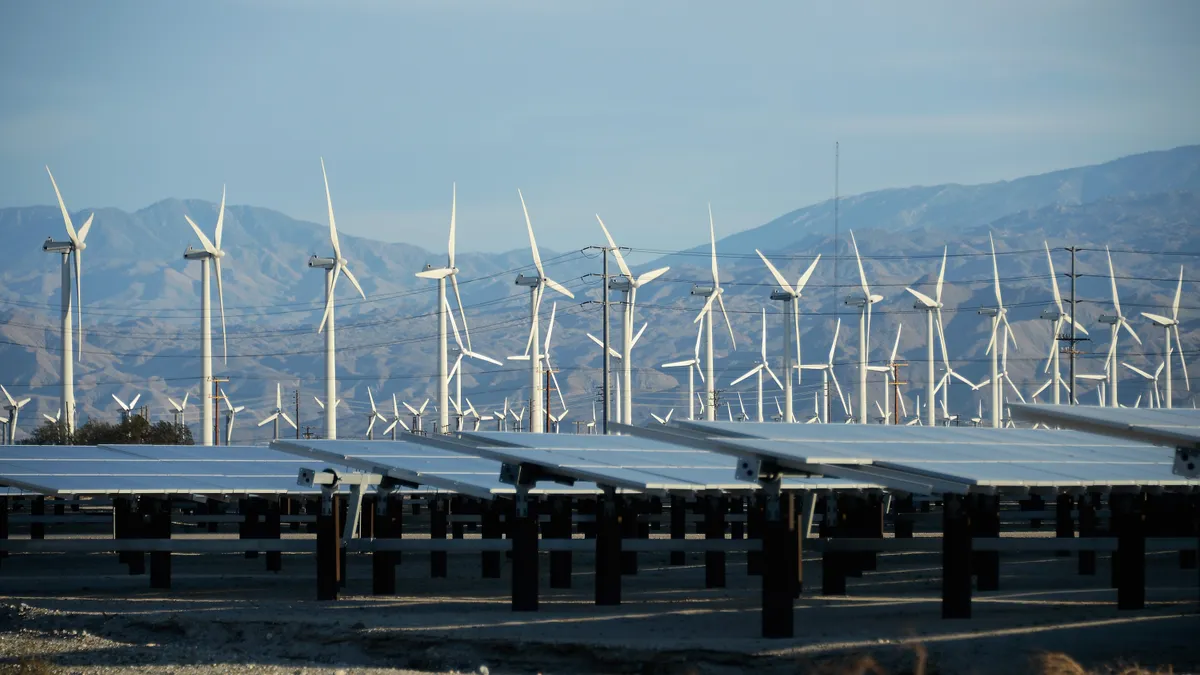The following is a contributed article by Armond Cohen, co-founder and president of Clean Air Task Force, and Michael Colvin, director of the California Energy Program at the Environmental Defense Fund.
California reaffirmed its leadership in advancing the transition to a zero-carbon economy last month by passing major climate and clean energy legislation.
The California Climate Commitment, swiftly signed into law by Gov. Gavin Newsom, codified the ambitious goals of the world’s fifth-largest economy — statewide carbon neutrality and a 100% clean electrical grid by 2045. It also set new interim targets to ensure accountability along the way and set the ambition to create millions of good jobs while saving taxpayers billions of dollars.
Now is the time to transform that ambition into reality by implementing a comprehensive clean energy deployment plan.
California is already well on its way to a clean energy future. Roughly 60% of electricity in the state now comes from carbon-free resources, and rooftop solar power generates enough electricity to meet the needs of 2 million homes.
Despite these gains, the scale of infrastructure that must be deployed is enormous as we electrify more parts of our economy, such as buildings and transportation. This means far bigger investments in wind and solar power. Resource diversity will be key to contain costs and maintain system reliability, which means more geothermal, clean firm power, battery storage and transmission capacity. According to one estimate, California will need to triple the amount of large power lines by 2050. In addition, we will install more customer-owned and demand management resources, update and expand the state’s antiquated distribution systems and deploy complementary technologies such as industrial carbon capture and clean hydrogen production and storage.
Potential delays, financial uncertainty and the sheer volume of new resources required add to the urgency for comprehensive planning and rapid implementation. Meanwhile, California continues to feel the impacts of climate change from record heat, persistent drought, unprecedented wildfires and flooding. Rolling blackouts remain a threat. The risks of building clean energy too slowly have far eclipsed the risk of moving too fast.
California can meet these challenges, but it will require new ways of thinking, decision-making and implementing — as detailed in a new report from our organizations, the Clean Air Task Force and Environmental Defense Fund. A comprehensive and unifying clean energy deployment plan, under a lead agency with substantial authority to marshal the necessary resources, should include specific quantities, locations and timing of infrastructure expansions. It should clarify roles and responsibilities that are developed in concert with local governments and stakeholders. And it must be revised as technology and society evolve.
Currently, responsibility for creating the physical foundation to achieve California’s climate goals is shared among nearly a dozen agencies. While the California Air Resources Board, California Energy Commission, California Public Utilities Commission, California Environmental Protection Agency and others have improved coordination and transparency, success requires overall responsibility under a single entity.
The complexity of eliminating emissions from every sector and region of the economy requires alignment with the state's economic growth targets and local clean energy transition. Contingency measures are needed if key milestones are not met. To ensure transparency and build public trust, the plan should include a website dashboard that tracks progress toward specific milestones. And the plan should address siting, permitting and supply-chain issues as well as land, social and institutional realities that typically fall outside of modeling studies.
California must accomplish all of this while holding to principles of equity and environmental justice, reducing siting conflicts and protecting biodiversity. Major infrastructure deployment will mean strong jobs for millions of workers throughout the state. To ensure accountability, public engagement efforts must be strengthened as deployment accelerates. And lawmakers will need to take actions that enhance system planning, siting and financing.
Coordinating California’s complex and diverse priorities is hard but doable. A comprehensive clean energy deployment plan, anchored by strong leadership, will create a pathway to an affordable, carbon-free and reliable electricity system and a more sustainable and prosperous economy.














